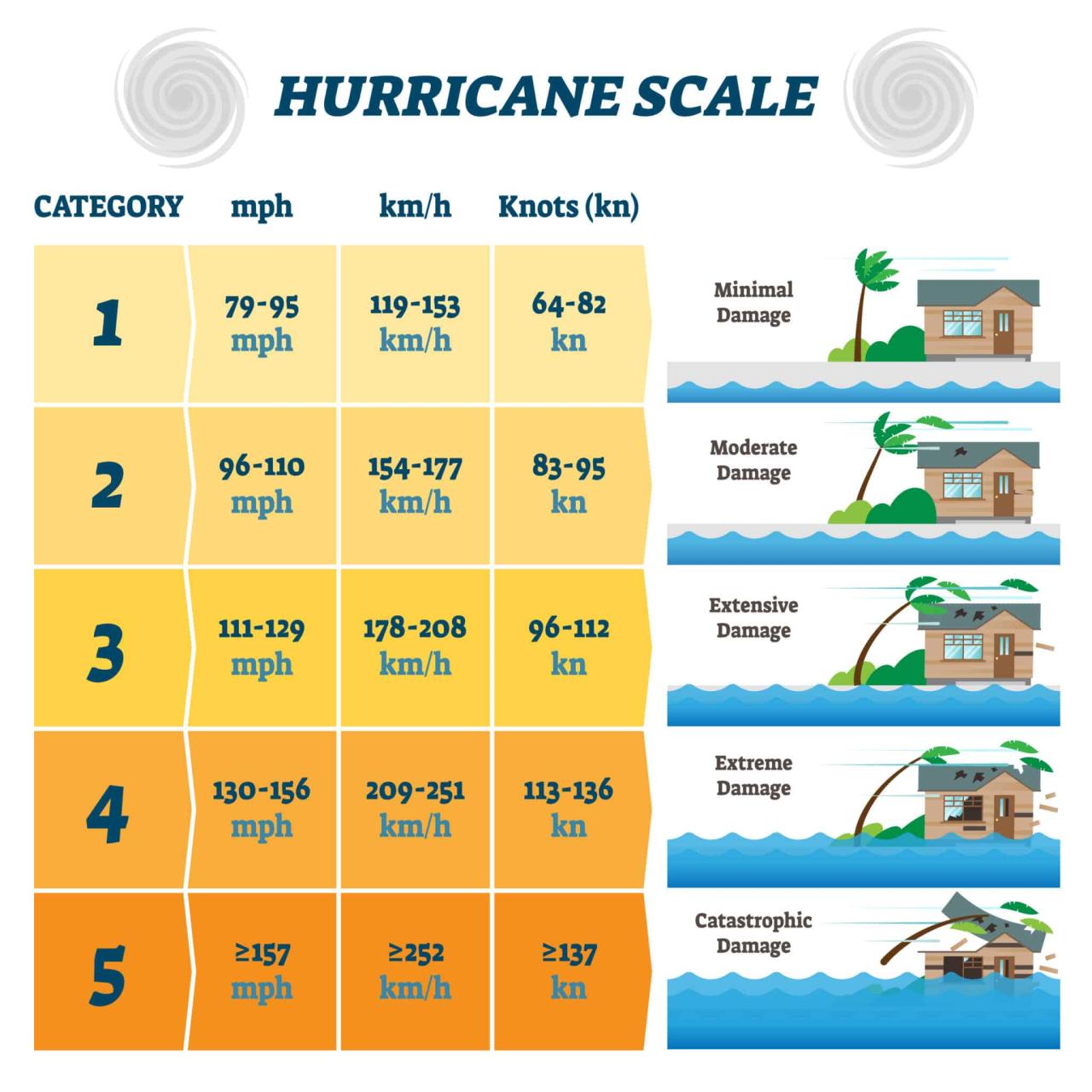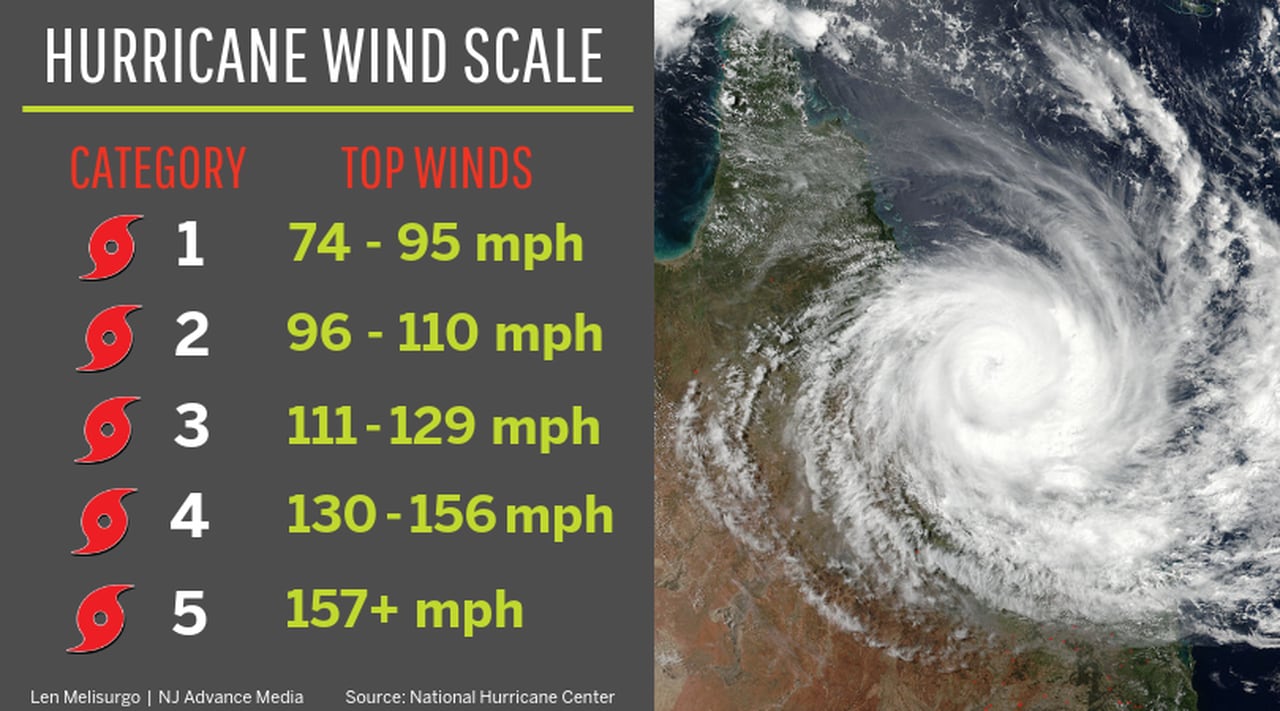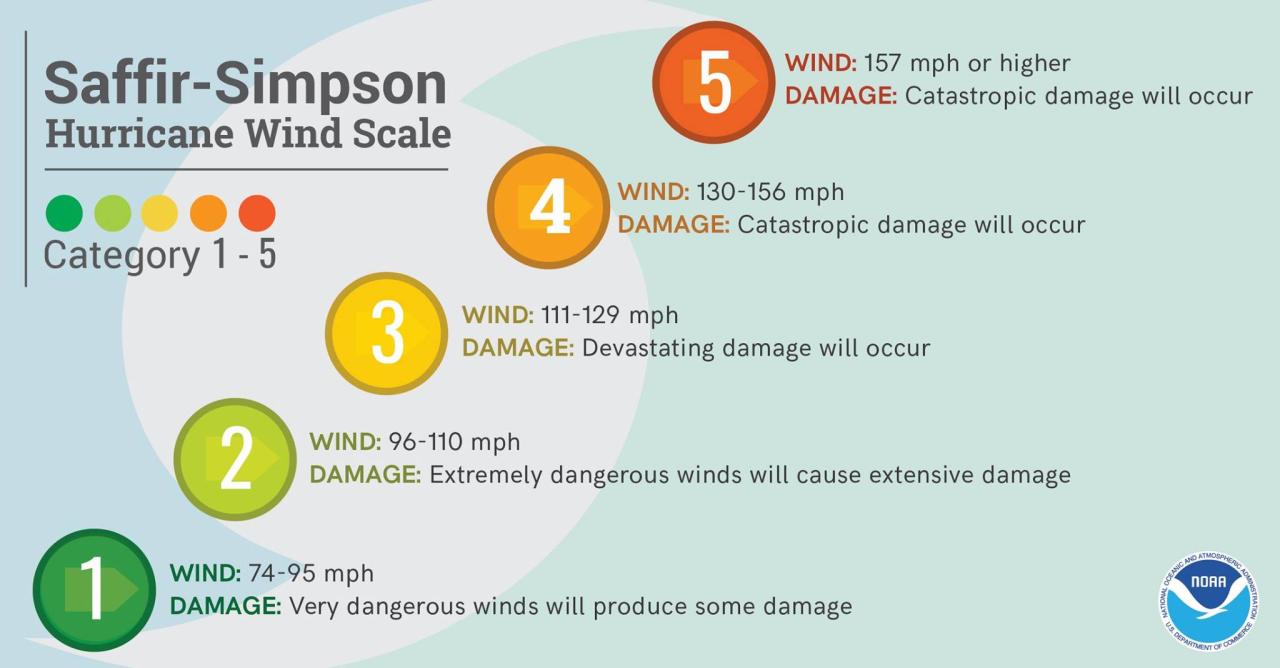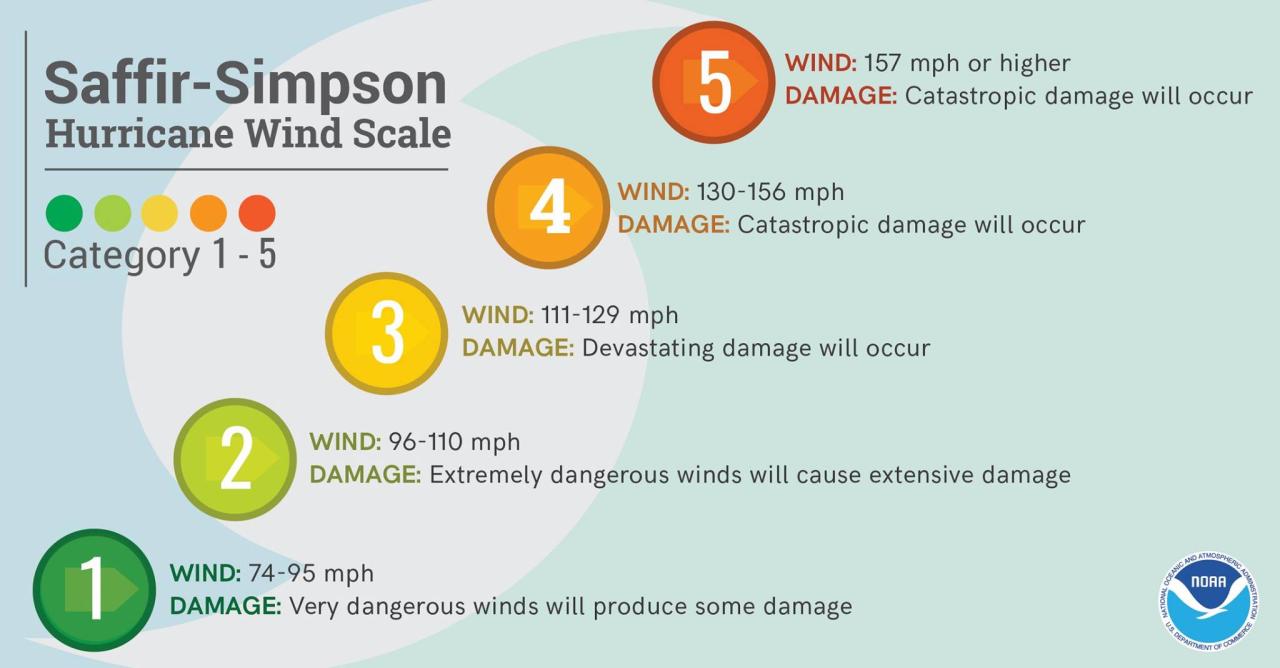Cat 4 hurricane wind speed, a force of nature that commands respect, unleashes destructive power capable of reshaping landscapes and threatening lives. With winds reaching speeds of up to 156 mph, these storms leave a trail of devastation in their wake.
Understanding the destructive potential of Cat 4 hurricane winds is crucial for communities in vulnerable areas. This article delves into the science behind these powerful storms, their impact on infrastructure and human life, and the measures we can take to mitigate their effects.
Cat 4 Hurricane Wind Speed Overview

Cat 4 hurricanes, as defined by the Saffir-Simpson Hurricane Wind Scale, are severe tropical cyclones with sustained wind speeds ranging from 130 to 156 miles per hour (209 to 251 kilometers per hour). These storms pose significant threats to life and property, causing widespread damage and potentially life-threatening conditions.
Historically, Cat 4 hurricanes have left a trail of destruction in their wake. Notable examples include Hurricane Andrew in 1992, which devastated South Florida, and Hurricane Michael in 2018, which ravaged the Florida Panhandle.
Wind Speeds
The wind speeds associated with Cat 4 hurricanes are staggering. According to the Saffir-Simpson Hurricane Wind Scale, sustained wind speeds range from 130 to 156 mph. These winds can cause catastrophic damage to buildings, infrastructure, and natural ecosystems.
Impact
Cat 4 hurricanes can have devastating impacts on communities. The powerful winds can cause widespread structural damage, uprooting trees, collapsing buildings, and downing power lines. Storm surge, often associated with these hurricanes, can lead to catastrophic flooding, inundating coastal areas and causing further destruction.
Impact and Hazards of Cat 4 Hurricane Winds

Category 4 hurricanes unleash devastating winds that can wreak havoc on infrastructure, buildings, and natural landscapes, posing significant risks to human life and safety. Understanding the destructive potential of these winds is crucial for implementing effective mitigation measures and ensuring community preparedness.
The sheer force of Cat 4 hurricane winds, often exceeding 130 mph, can cause widespread damage to buildings, tearing off roofs, shattering windows, and collapsing walls. These winds can also uproot trees, snapping their trunks and scattering debris across vast areas, potentially blocking roads and causing power outages.
Infrastructure Damage
- Extensive damage to power lines, communication networks, and transportation infrastructure, disrupting essential services and isolating communities.
- Bridges, overpasses, and other critical structures may be weakened or destroyed, hindering emergency response and recovery efforts.
- Gas pipelines and other hazardous materials storage facilities can be compromised, leading to leaks and explosions, posing further threats to public safety.
Human Life and Safety, Cat 4 hurricane wind speed
- High winds can create flying debris that poses a direct threat to life, causing severe injuries or fatalities.
- Strong winds can also lead to storm surge, a rapid rise in sea level that can inundate coastal areas, trapping residents and causing drowning.
- Prolonged exposure to hurricane-force winds can cause physical and psychological stress, leading to exhaustion, anxiety, and other health issues.
Mitigation Measures
Mitigating the impact of Cat 4 hurricane winds requires a comprehensive approach, including:
- Strengthening building codes and construction standards to ensure structures can withstand high winds.
- Implementing land-use planning measures to limit development in high-risk areas.
- Educating the public about hurricane preparedness and evacuation procedures.
- Investing in early warning systems and emergency response capabilities.
Forecasting and Tracking Cat 4 Hurricanes
Forecasting and tracking the movement of Cat 4 hurricanes is crucial for mitigating their impacts and safeguarding lives and property. Meteorologists employ advanced numerical models and observational data to predict hurricane tracks and intensities.
Hurricane forecasting models utilize complex equations to simulate atmospheric conditions and predict hurricane behavior. These models incorporate data from weather stations, satellites, and aircraft reconnaissance to initialize and update their forecasts.
Accuracy and Limitations of Hurricane Forecasting Models
While hurricane forecasting models have improved significantly over the years, they still have limitations. Factors such as the chaotic nature of the atmosphere, limited observational data, and model imperfections can introduce uncertainties into forecasts.
Despite these limitations, hurricane forecasting models provide valuable information for emergency managers and the public. They can predict the general track and intensity of hurricanes days in advance, allowing for timely warnings and evacuation plans.
Importance of Timely Warnings and Evacuation Plans
Timely warnings and evacuation plans are essential for minimizing the impacts of Cat 4 hurricanes. When hurricane warnings are issued, residents in affected areas should take immediate action to evacuate to safe locations.
Evacuation plans should be developed in advance and should include designated evacuation routes, shelters, and communication procedures. By following evacuation plans and adhering to warnings, communities can reduce the risk of casualties and property damage during Cat 4 hurricanes.
Epilogue: Cat 4 Hurricane Wind Speed

As the climate continues to change, the frequency and intensity of Cat 4 hurricanes are expected to increase. It is imperative that we enhance our forecasting and tracking capabilities, invest in resilient infrastructure, and promote community preparedness. By understanding the destructive force of Cat 4 hurricane wind speed, we can better protect ourselves and our communities from their devastating impacts.
FAQ Overview
What is the difference between a Cat 4 and Cat 5 hurricane?
Cat 5 hurricanes have wind speeds of 157 mph or higher, while Cat 4 hurricanes have wind speeds between 130 and 156 mph.
What are the most common hazards associated with Cat 4 hurricane winds?
Structural damage to buildings, downed power lines, uprooted trees, and flooding are common hazards associated with Cat 4 hurricane winds.
How can I prepare for a Cat 4 hurricane?
Secure loose objects, have an evacuation plan in place, and stay informed about the storm’s track and intensity.

